#Charles V of the Holy Roman Empire and I of Spain
Text
La armadura de Carlos V por Francesco Negroli y hermanos (Galería de las Colecciones Reales)
Armadura del emperador Carlos V por Francesco Negroli. Galería de las Colecciones Reales.
Milán, hacia 1550-1553. Acero damasquinado en oro y plata dorada, pavonado y grabado.
Continue reading La armadura de Carlos V por Francesco Negroli y hermanos (Galería de las Colecciones Reales)

View On WordPress
#Armaduras#Carlos I de España#Carlos I de España y V de Alemania#España#Felipe II#Francesco Negroli y hermanos#Galería de las Colecciones Reales (Madrid)#Madrid#Siglo XVI#Armours#Renaissance#Spain#Royal Colections#Italy#Charles I of Spain and Emperor of the Holy Roman Empire#Philip II of Spain
2 notes
·
View notes
Text
Holy Roman Empire circa 1556: boy howdy, it sure is expensive to put down all these rebellions — I hope nobody decides to give away our main cash cows, Spain and Naples
Charles V, gouty and dying: hee hoo hee, guess what I'm about to do :)
0 notes
Text
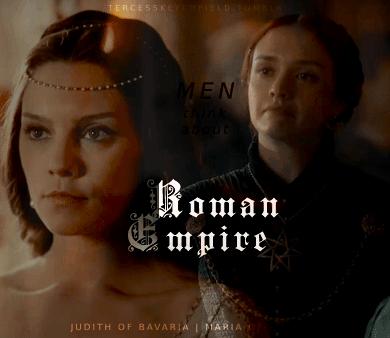
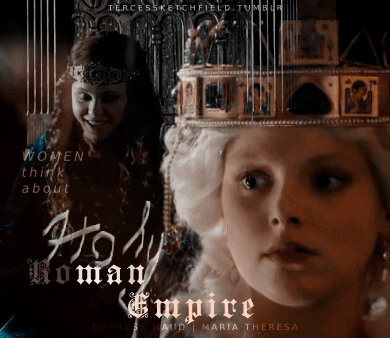
MEN THINK ABOUT ROMAN EMPIRE. WOMEN THINK ABOUT HOLY ROMAN EMPIRE
JUDITH OF BAVARIA (797-843) — Daughter of Count Welf I of Bavaria, Judith was a Carolingian Empress as the second wife of Louis I the Pious. Mother of Gisela and Charles the Bald, she foght for both her own influence at court and for the succession of her son over the claims of his elder half-brothers, the sons of Louis I from his first marriage. Charles became the Emperor in 875, after the death of Louis II, his nephew and a son of his half-brother Lothair / fancast: Annabel Scholey
MARIA OF AUSTRIA (1528-1603) — Daughter of Charles V, Holy Roman Emperor, and Isabella of Portugal. She served as Regent of Spain both jointly with her husband, Maximilian (before their accession to the imperial throne), and in person, for her father, and brother, Philip II. Her children include two Holy Roman Emperors, Rudolf II and Matthias, over whom she held great influence, and queens consorts of Spain, and France / fancast: Olivia Cooke
EMPRESS MAUD (1102-1167) — Daughter of Henry I of England and Matilda of Scotland. Her first marriage to the Holy Roman Emperor, Henry V, gave her the title under which she came down into history, and was a source of great pride to Maud. Rightful heiress of Henry I, she confronted her cousin, King Stephen, in the civil war, known as the Anarchy, fighting ferociously for her rights. She failed in this for herself but won for her son Henry, who became king and established the Plantagenet dynasty in England / cast: Alison Pill in The Pillars of the Earth (2010)
MARIA THERESA (1717-1780) — She succeded her father Charles VI as the ruler of Habsburg monarchy in 1740, and devoutedly defended it against its enemies in the War of Austrian Succession and the Seven Year's War. Wife of the Holy Roman Emperor, Francis I, she was a forceful personality and a competent ruler herself, reigning first in her own right, and later, jointly with her son Empreror Joseph II. Her children include two Holy Romam Emperors (Joseph II and Leopold II), queens consorts of Naples ans Sicily, and France / cast: Marie-Luise Stockinger in Maria Theresia (2017)
#historyedit#judith of bavaria#maria of austria#empress maud#empress matilda#maria theresa#maria theresia#perioddramaedit#history#women in history#perioddramasource#onlyperioddramas#tusereliza#userbennet#usermina#weloveperioddrama#cortegiania#perioddramagif#gifshistorical#my edit#*i have literally zero idea what is this lmao* but i really like it idk
137 notes
·
View notes
Note
catie I NEED more vettonso lore for your au. please. (love u)
Aaaaaaaaaaa!!!!!! C!!! Thank you so much for asking!! This took me a bit cause there’s a lot of stuff I want to cover and I had to figure out how to balance the explanation of the historical context and how I apply it to my AU. But seriously thank you for asking because I did more research to write this post and learned a lot of things that make me feel deranged but I cannot bring any of this up to anyone irl without sounding like a lunatic. I’d apologize for the length but you should expect this from me by now! (I realized this doc for this was 1.5k+ my god)
Basic Info: early 1700s historical AU with arranged marriage plot
Historical Context:
Okay, so this AU is based on a real historical event: The War of The Spanish Succession. Which is when the Spanish Throne was without a clear line of succession because the bloodline(Spanish Habsburgs) died out. So then, even though the previous Spanish King named his successor(Philip V, a Duke related to the French Royal family - representing Fernando in this AU), the Habsburgs still thought they should be allowed to keep the throne within their dynasty, thus offering up the second son(Charles VI - representing Seb in this AU) of the Holy Roman Emperor. So obviously they had to start a war because of it. But then the end result ended up being that because Charles VI’s older brother, the Holy Roman Emperor at the time, died during the war(because of illness though so it would have happened regardless), he became the next Emperor and Philip V ended up becoming the Spanish King after all, rendering it all pointless imo.
How does this relate to Vettonso?:
I'm not overly interested in either Charles VI and Philip V as people, but rather the roles they fulfill in this conflict, but obv I can’t help but draw on details from their lives. As I mentioned, Fernando is now Fernando I of Renault/France Spain and Seb is Sebastian I of Red Bull Austria. This is supposed to be like 2010-2012!Vettonso with Ferrari!Fernando and RBR!Seb(but like Fernando's title of Duke coming from France, because of his championships with Renault.) This AU is kinda just me looking at this historical event and thinking: wouldn’t a gay arranged marriage solve this succession quandary? But also just that it reminds me of Fernando and Seb’s rivalry, and the nationalities/kingdoms fit pretty well!!
Think about the throne of Spain as akin to winning a race, but becoming Holy Roman Emperor as winning the whole entire competition.(Also side note: real life Charles VI didn’t become a king until he became Emperor and adopted all of his brother’s titles, but I want Seb to be a boy king in this AU, so he can have a title as a treat.) Imagine you’re competing for something and you win it, but the only reason you win is because the other competitor won an even bigger prize!!!! Yay you got what you wanted but the boy king is now the emperor of most of Europe. And now you are stuck with him through lawfully wedded arranged marriage because they let you have what you wanted but only under the condition that the two kingdoms are still united. Yeah Fernando got the title, but Seb gained even more titles(get it???)
They probably have a lot of animosity coming into the marriage, like “how could I ever build a relationship with the man who tried to steal my birthright?” but then realize they’re pretty similar after all. Though obviously Fernando has a lot more resentment than Seb because Seb won the whole damn thing! He would have control over Spain as he’s the king but since it's still within the domain of the empire, Seb would always have the final say. And Seb tries to be magnanimous like “Don’t worry, I won’t interfere”, and Fernando is all snide with comments like “Oh thank you great imperial majesty, can I really? Would you really allow me to do so?” But eventually become loving co-rulers that still constantly snipe at each other over different decisions the other makes.
Some headcanons(I guess you’d still call it headcanons even if it's your own AU bcs it still comes from your head) + some fun facts from real life that have brainrotted me so I’m putting them in:
Their dynamic is just Seb being a very righteous, bratty boy king emperor who is unabashed about being that way, because he feels that it is his right, but still has a heart of gold and wants to treat his husband well no matter the circumstances leading to their marriage. And then Fernando is like a stray cat that keeps hissing and scratching because it’s really hard for him to accept the circumstances because he still feels humiliated, even though he got everything he wanted, but he still can’t help but be charmed by this baby emperor because he sees attributes of himself in Seb, and can’t really fault him because he would be the exact same, flaunting his power, if he were in Seb’s shoes.
They would have to speak in French to each other because that’s their shared language but eventually attempt to learn each other’s native languages! Imagine Seb has to travel to Spain to give some Emperor speech and Fernando then bullies him for his bad Spanish.
They would probably split where they live based on a schedule or by need. Yes, Fernando is the King of Spain but he is also the Emperor’s husband so he does have to spend time in the capital, Vienna. And then since Spain is a part of the empire, Seb has to go routinely, but y’know also to spend time with his husband. They find that their marriage as well as their politics is full of having to make concessions and compromises in order to make it work.
Something I find funny is that as compensation for not getting the Spanish throne back, Spain had to cede some Italian territories to the Empire. That is literally the Ferrari plot with the transfer from Fernando to Seb!!
I’m not sure how the titles would work in this AU because obviously a m/m political marriage has not ever happened(as far as I know.) But I guess Fernando would just be King Fernando I of Spain and then Seb would be Holy Roman Emperor Sebastian I with the million titles that come with being in that role(though like most importantly Archduke of Austria and King of Bohemia and Hungary, etc.) I like the idea that Seb tries to share some titles with Fernando as a show of good will but Fernando is so affronted, mostly just from embarrassment, like “oh you think I need your good will?? I can’t be happy with what I earned in my own right??” But their kids would receive both titles and would be split in the traditional way, like first kid getting it all mostly, but the others still being nobility obv(yes.. there would be mpreg because of the plot need for succession….don’t ask who…)
They bond through their love of horses, particularly fast horses. The first time they go riding together, they’re both like awkwardly trying to act very proper as a sense of showmanship to the other like “I’m more mature than you”, but then can’t stop trying to get ahead of the other person and eventually break into a full-on race. Their aids are mutually like “oh god, they’re both the same type of insane.”
Irl Charles VI was so salty about losing the throne that he wouldn’t stop dressing like a traditional Spanish monarch. I can totally see Seb doing that and Fernando getting so pissed with him like “you became emperor!! What more could you possibly want???’ and Seb then fixing him with his biggest pout and saying “your throne!” But also Fernando being weirdly into it because it’s basically Seb presenting himself blatantly as Fernando’s spouse.
In that same vein, I’m going crazy over how there’s a painting from before the war, of Philip V wearing vestments from both the French order of chivalry and the Habsburg order of chivalry. Like basically stating the desire to see those two lines combined into one kingdom, which fits so well into this AU. Just Seb going crazy over how Fernando is willingly branding himself as belonging to Seb’s house.
A testimony of Philip V’s personality is that he was a “neurotic, vacillating ruler, concerned with outward decorum and brave only in battle,” god can you not sense the energy of Fernando in that statement???
Very important to me that Charles VI reportedly had many male lovers, and that his soulmate was one of his courtiers. Maybe there can be a bit of Martian or Sebson cheating plot with them being his courtiers hahaha
Not very relevant in this AU but there’s something about how Philip V had the longest ever reign of a Spanish monarch. Is that not Fernando??? Old man who will rule on forever, or should I say, forever keep his seat
I already obv posted the wip for this but I'll include it here again as visual rep hehehe:
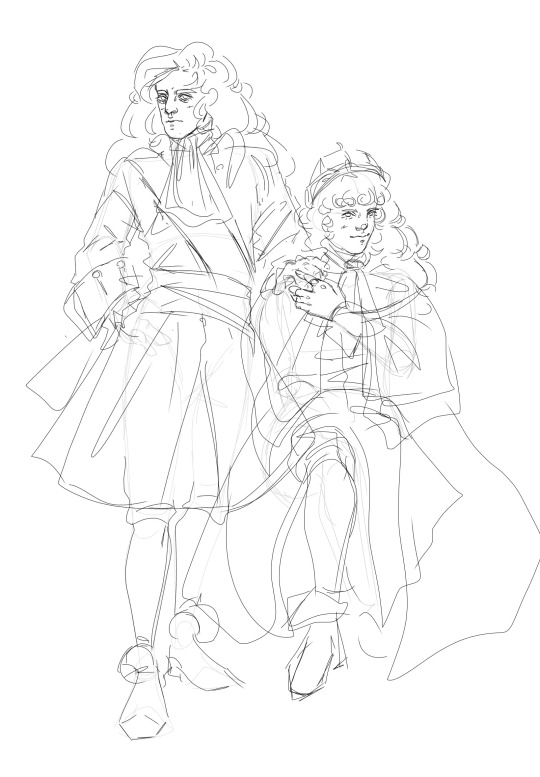
I've spent way too much time lately trying to research the fashion of the time ugh. But this, as I said, is like first joint portrait session into the marriage. And I guess I kind of want them to be wearing their corronation clothing, which I'm pretty solid on for Seb but still need to research more for Fernando. I think I'll maybe try and just put him in the afformentioned traditional Spanish monarch clothing, but the fact that it's all black kinda bores me, I'd rather he wear red!! This is like a typical royal couple type pose, except they're being more tactile. Also there's something to be said about the symbolism of Fernando being the one standing and Seb being the one sitting hehehe....
#*oh also posting this in my typical habit of scheduling posts for when i sleep so sry if i dont respond bcs i am in fact asleep#*sorry for making you wait for this C! I said in a bit but then i didnt...i like waking up to notes okay ...BUT AGAIN TYSM FOR ASKING#alternate title for this post: what being in Austria does to a man#I mentioned to my friend from the trip abt how having been there has affected me and has made me think way too much about the history#and shes like 'oh yeah ive not really thought about austria too much since coming back'#me just sitting there with my phone gallery full of historical paintings for reference and my head full of research like: 'haha oh okay...'#often my thoughts about AUs is just a bunch of rambling thoughts in my head#so its very nice and helpful to have to write it out like this and turn it into something more than absent thought#most of the headcanons spontaneneously popped into my head while I was writing out the main section hahah#hope you enjoy!!!! hopefully I'll be able to finish my drawing of them !!#especially since I'll prob never end up writing a fic bcs i like writing rambling but anything more formalized is soooo difficult for me#vettonso#catie.rambling.txt#catie.asks.#formula 1#boy king au
41 notes
·
View notes
Text








AU: Valois House. Children Francis I and Claude Valois.
Luisa(1515 - 1576). Queen of Spain and Empress of the Holy Roman Empire. Wife of Charles V. Despite the fact that the age difference between the spouses was 16 years, they loved each other. Charles treated his young wife with tenderness. She was interested in music, dancing and writing. Luisa and Charles had 7 children: John III, Claude, Philip, Ramiro, Ferdinand, Joana, Charles.
Charlotte(1516 - 1570). Queen of Portugal. Wife of Juan III and mother of 6 children: José I, Manuel, Isabella, Sancho, Aldegunda, Mary. Charlotte devoted much time to the education of her children and the enlightenment of the Portuguese court. She was the favorite sister of Francis II and maintained a close relationship with his wife.
Francis II(1518 - 1590). King of France. Husband of Mary Tudor. Francis loved his wife. Unlike his father and brothers, he never had mistresses or children out of wedlock. The reign of Francis II was an era of prosperity and rise. Father of 8 children: Claude, Francis III, Catherine, Charlotte, Tristan, Raoul, Adele, Henry.
Henry(1519 - 1587). Duke of Orleans. Husband of Catherine de Medici and father of 10 children: Francis, Elizabeth, Claude, Louis, Charles, Henry, Margaret, Hercule, Victoria and Jeanne. All his life loved only his mistress Diana de Poitiers, even wanted to marry her, but because of pressure from his father did not do it.
AU: дом Валуа. Дети Франциска I и Клод Валуа.
Луиза(1515 - 1576). Королева Испании и императрица Священной римской империи. Жена Карла V. Несмотря на то, что разница в возрасте между супругами была 16 лет, они любили друг друга. Карл с нежностью относился к моло��ой жене. Интересовалась музыкой, танцами и писательством. У Луизы и Карла родилось 7 детей: Хуан III, Клод, Филипп, Рамиро, Фердинанд, Хуана, Карл.
Шарлотта(1516 - 1570). Королева Португалии. Жена Жуана III и мать 6 детей: Жозе I, Мануэль, Изабелла, Саншу, Альдегунда, Мария. Шарлотта уделяла много времени образованию своих детей и просвящению Португальского двора. Была любимой сестрой Франциска II и поддерживала близкие отношения с его женой.
Франциск II(1518 - 1590). Король Франции. Муж Марии Тюдор. Франциск любил свою жену. В отличие от отца и братьев у него никогда не было любовниц и внебрачных детей. Правление Франциска II было эпохой процветания и подъёма. Отец 8 детей: Клод, Франциск III, Екатерина, Шарлотта, Тристан, Рауль, Адель, Генрих.
Генрих(1519 - 1587). Герцог Орлеанский. Муж Екатерины Медичи и отец 10 детей: Франциск, Елизавета, Клод, Людовик, Карл, Генрих, Маргарита, Эркюль, Виктория и Жанна. Всю жизнь любил только свою любовницу Диану де Пуатье, даже хотел на ней жениться, но из-за давления отца не стал этого делать.
Part 1.
#history#history au#royal family#royalty#au#france#france history#History of France#French royal family#french#french royalty#french royal family#French royal#Royal#Royals#the tudors#henryviii#mary tudor#the serpent queen#catherine de medici#mary stuart#Henryii#francis valois#The reign#elizabeth i#15th century#16th century#Francis i#Francisii#French kings
23 notes
·
View notes
Text

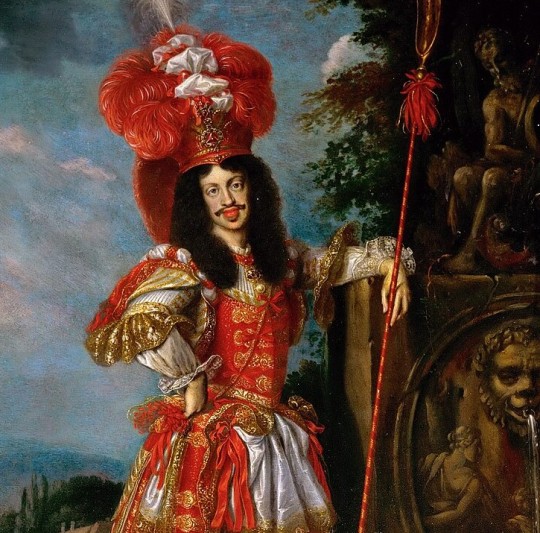
Charles V, King of Spain, Holy Roman Emperor, etc. reigned 1519-1556
His two iconic bastards are also in this bracket.
from @master-of-the-opera-house:
Universal empire babey! Sure he lucked into it, but very much successfully kept it afloat in his time on the throne, more than less anyway.
Born on toilet at a party at 3am
Mummy issues
Daddy issues
Shagged his step-grandma when he was 19. Love wins!
Look at the size of that chin! A peasant had to tell him to close his mouth bc he couldn't keep his jaws shut by default
If Leopold was the ugliest in the Austrian branch he's probably the ugliest or at least second in the Spanish branch
Approved of a cocks-out nude statue of himself walked so nsfw fanart commissions could run
The ✨ confidence ✨ he had to do that uwu
God complex
Accidentally shot a peasant dead with a crossbow once as a teen oopsie
((probably wasn't the same peasant))
Burnt out and got depressed at the end of his life the least he could win is a poll
Split the inheritance into the Spanish and Austrian branch so without him we literally wouldn't even be voting today
Leopold I, Holy Roman Emperor, reigned, 1658-1705
So many wars going on in this reign
Also from @master-of-the-opera-house (rooting for both sides I guess):
LOOK! AT! THAT! DRIP! Serving! Slaying! Who doesn't love a red lip?
Often termed the ugliest member in the Austrian branch which is saying a LOT he's a winner baby! 💅
He must've had such confidence uwu
Un-screwed his way back from a pretty rocky start from beefing with everyone ((9 years war Spanish succession etc)), to the success in the Ottoman Siege of Vienna
Wasn't originally trained to rule even! Held up well tbh
Also backpedalled from a succession crisis
His wife called him "Uncle" because she was also his niece who doesn't love when couples are close 🤪🤪
Hated Louis XIV and don't we all
Responsible for a lot of cool baroque golden age stuffandthings
Freddie Mercury moustache before Freddie Mercury made it cool
Theatre kid
MuSicAL tHeatRe kid.
#best habsburg bracket#house of habsburg#without biasing anyone to either side#they just don't make fashion like either of these portraits anymore what a pity
32 notes
·
View notes
Note
Hi my friend 👋, Who is your favorite Habsburg King? One for Austria and One for Spain?
Who is your least Favorite king of all time? I wish you the best.
HIIII !! how good is to receive an ask just the moment i was thinking about going to random dms to infodump people about random hyperfixations . specially from you my friend im wishing you the best too .
I really like habsburg story as it is full of girlbosses and malewifes ( a really cool dynasty ) . IIIII i really like the austrian ones , spaniards are always a mystery to me . I lived there for four years and I still dont catch their accent . My favourite habsburg monarch is emperor Franz II im not normal about him . there is an strong need to scream everytime i think about him . People probably must known him more for the napoleonic wars but I think he is very interesting by his own right . But tbh I really like all habsburgs from Austria they are very babygirls . Maximilian I , Charles V , Ferdinand I , Rudolf II , Leopold I , Charles VI , Marie Theresia , Joseph II and Ferdinand I of Austria ( not to confuse him with Ferdinand I of the Holy Roman Empire ) are my favourites but I really like all of them except for Leopold II and Francis I ( i have a love-hate relationship with him bc he is funny but I hate that he wasnt faithful to Marie Theresia bc !! SHE WAS LITERALLY A 10 ?! ) . From Spain I truly only like Felipe I and Carlos II . The other ones are very boring to me but I get that Felipe II was interesting . I am not mentioning Charles I because I already mentioned him as emperor . Well . He should be here because he is a spanish one yeah . so yeah he is also here i really like him i find him too funny and he was very babygirl . I mostly like infantes of Spain like the Cardinal-Infante Fernando de Austria , Don Juan José de Austria , Carlos de Austria ( son of Felipe II - prince of Asturias before Felipe III ) and Carlos de Austria ( brother of Felipe IV , I really like him !! I find him autistic and awkard asf and I really like that in people . Like Franz II ) . Those are my tastes in Habsburgs sadly I will try not to talk about the women too as to not make this too big but I also love their queens . Felipe IV is an enigma to me I find him incomprehensible . Truly a mystery like Spain itself . I liked that moment when Louis XIV and Philippe d'Orléans went to hug him and cry when they met to give Louis XIV his wife that was hilarious .
2.IIII I would say Henry VIII cus he is easy to hate but I do also hate Henry VII because he is the one who made my homecountry a mess ( Wales - if you ever see me talking weird english , is because its not my native language ! I speak welsh hehe ) . I really really hate Charles X of France because he ruined my favourite queer mentally ill dynasty ( bourbons ) and destroyed everything Louis XVIII worked for ( he is my !! favourite historical figure ever ) . I dont really hate many monarchs bc even if they are bad they are amusing to know about . The real hate I have to a historical figure is to Saint-Just but i completely agree with his ideas but he was a real asshole and i dont know how robespierre was friend of that guy . he was literally an edgy teen trying to be a politic is everything i hate about politics but worse because i agree with everything he said . except killing louis xvi that was a mistake . they should have put louis xvi in a box and send it to austria if they didnt wanted him there
#mariana ' s#HIIIII !! i have to send you more personal asks too#but i always fear that my tastes in history are too weird like who the fuck is louis xviii#i I HAVE SOME IDEAS may come back tomorrow to ask bc i need to go to sleep#see ya later#:3#<--- im always looking at your interactions like this but i am very bad at showing emotions on text
5 notes
·
View notes
Photo

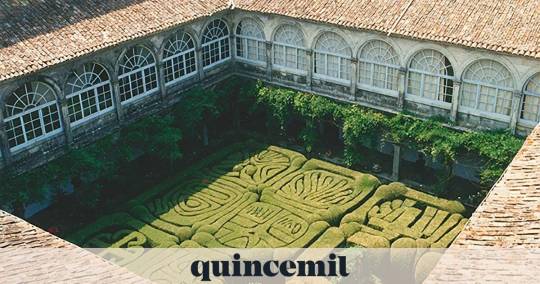



The Pazo de San Lorenzo de Trasouto, located just over a kilometre from the Cathedral of Santiago and declared a Site of Cultural Interest by National Heritage in 1979, is one of the most beautiful Romanesque complexes in the Galician capital: its interior coexists garden, with a 17th century boxwood hedge, and a spectacular church.In its 40,000 square meters, both the emperor Charles I of Spain and V of the Holy Roman Empire, who chose it as an Easter retreat in 1520, as Rosalía de Castro, who used to go to his carballeira for inspiration and dedicated some verses to him in New leaves.
Between the 17th and 18th centuries, some of the most characteristic elements of San Lorenzo de Trasouto were built, such as the main chapel, the sacristy or the cloister, with its characteristic boxwood hedge garden, the pazo’s greatest jewel.It is Labyrinthine boxwood garden dates back to the 17th century and, beyond the beauty of its colors, it stands out for representing ecclesiastical symbols such as the Latin cross or the cross of Santiago.
https://www.archyworldys.com/the-pazo-of-san-lorenzo-de.../
58 notes
·
View notes
Text
Hello, welcome to my blog!
Here, I write mostly about Holy Rome from Hetalia, and if you are curious about my thoughts on him, then feel free to message me or leave a comment on one of my posts :) I love talking about him, whether the young, old, or female him. But I personally love portraying him as older and female. Despite that, I write non-ship posts about HRE as male because it is his canon gender.
I enjoy (Female/Male) HRE/HRE!Germany with different characters, either platonically, romantically, or both:
England - Hanoverian Dynasty
France - the Frankish Kingdom
Papal States - Investiture Controversy
Czechia - mistress/handmaiden trope
America - golden children
Spain - "the empire where the sun never sets" of Charles V
Austria - Habsburg Dynasty
Prussia - Mr. Physician
Portugal - a friend who is maybe in love
Hungary - women with princes to save ⚔
Romano - Henry VI and Frederick II with Sicily
Ottoman Empire - Reichskrieg
Italy - first love dies or never dies
Saxony - Ottonian Dynasty
Bavaria - Big Brother championship
Francia - Carolingian Dynasty
Hanover - divided loyalty
Hesse - New World's traveling partners
Talking about the "HRE is Germany theory," I think Hima leans towards this theory more than not, but I hope that he would remain vague about it to please everyone. Personally, I don't want him to be Germany in canon because the Holy Roman Empire had historical differences with Germany that I feel would be overshadowed if the two ended up being the same person. I also have my own interpretation of the character, which does not align with how I interpret Germany. But I deeply deeply love using the theory for narrative purposes, and I think HRE!Germany without amnesia would be different than with.
P.S. I reblog other content than Hetalia.
#hetalia#hws holy roman empire#nyo holy roman empire#hreeng#holypapal#holyczech#probably gonna edit this
3 notes
·
View notes
Text
Historical Muse: Archduke Maximilian I of Austria
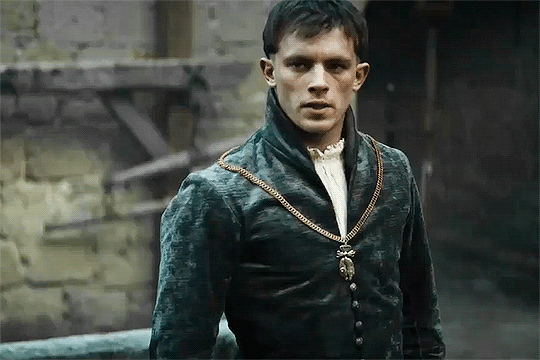
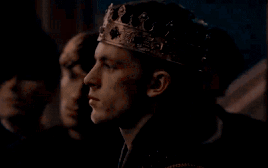
From the Oxford References
(1459–1519)
King of the Romans (1486–93) Holy Roman Emperor (1493–1519). By marrying Mary, daughter and heiress of Charles the Bold (1477), he added the duchy of Burgundy (which included the Netherlands) to the Habsburg lands, thus earning the enmity of France. He defeated the French at the battle of Guinegate (1479) but the Habsburg–Valois rivalry continued in the Netherlands and Italy.
In 1490 he drove out the Hungarians, who, under Matthias I (Corvinus), had seized much Austrian territory, and by the Treaty of Pressburg (1491) he was recognized as the future king of Bohemia and Hungary. After repulsing the Turks in 1493, he turned to Italy where war was waged between French and Habsburg troops until 1516. He was at a military disadvantage since the German princes refused to finance his campaigns and, despite allying with England against France, he was forced to cede Milan to France and Verona to the Venetians, and to sign the Treaty of Brussels with Francis I in 1516. He was also forced to grant the Swiss independence from the Holy Roman Empire in 1499.
Dynastically he had great success; his son Philip's marriage to the Infanta Joanna (daughter of Ferdinand V and Isabella) united the Habsburgs and Spain, and his grandson's marriage to the daughter of the King of Bohemia and Hungary secured his inheritance to those lands. In Germany Maximilian's attempt to impose centralized rule on the princes and cities was resisted, since they were determined to remain self-governing. His achievements were in increasing Habsburg territory far beyond Germany, notably by linking it to Spain, and thus to Spain's empire in the Americas.
Basic Info
Hair Color: Brown, dark blond
Eye Color: Blue
Height: 6'2"
Body Type: Average, but sturdy
Gender: Male
Birthplace: Wiener Neustadt, Austria
Residence: Various royal residences across the Habsburg lands
Languages: German, Latin, Hungarian, Czech, Spanish, French, limited dutch
Personality
Positive Traits: Strategic, diplomatic, visionary
Negative Traits: Stubborn, prone to overestimating his capabilities
Neutral Traits: Reserved, introspective
Fears: Loss of Habsburg territories, failure in war
Hobbies: Falconry, horseback riding, collecting manuscripts
Connections
Family Members: Philip (son), Joanna (daughter-in-law)
Spouses: Emma of Burgundy
2 notes
·
View notes
Photo
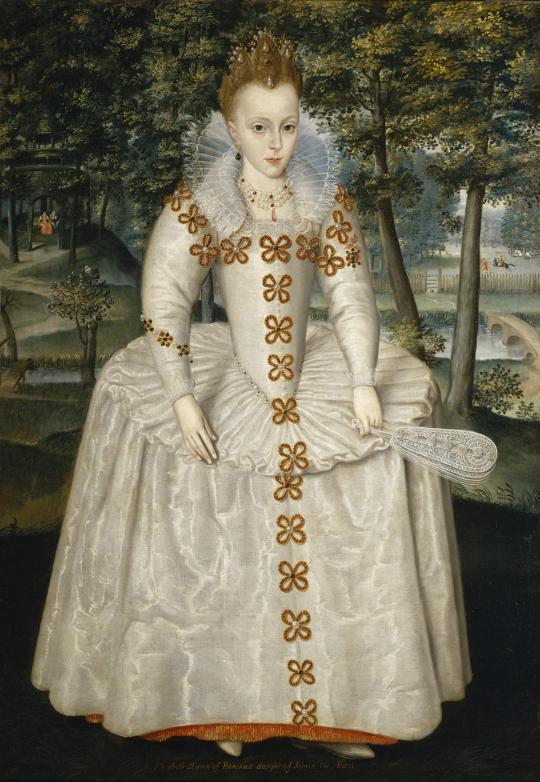

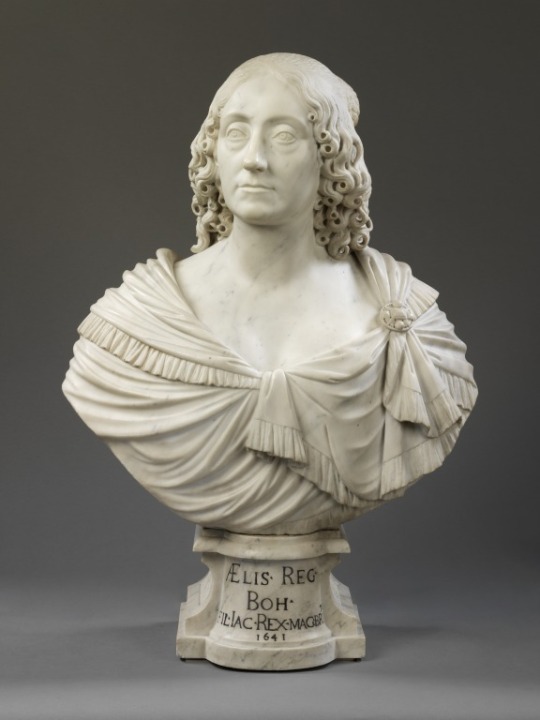

On November 7th 1619 Elizabeth Stuart was crowned Queen of Bohemia.
Elizabeth was the eldest daughter of James VI, and Anne of Denmark. She was thus sister to King Charles I and cousin to King Frederick III of Denmark.
Born in at Falkland Palace, Fife,on 19th August 1596, she was named Elizabeth in honour of the then-ageing English Queen, Elizabeth I, who had remained childless. Her older brothel was Prince Henry, of her other siblings, Charles would however go on to inherit the throne.
To all intents and purposes, Elizabeth had a happy upbringing at Linlithgow Palace, one of the grandest of Scotland’s royal residences, and one of my favourite places to wander around.
In 1603 her father James succeeded Elizabeth I to the English throne. Elizabeth was handed over to the care of Lord and Lady Harrington and took up residence at Coombe Abbey, Warwickshire.
Lord Harrington indulged her passion for nature, and in a secluded wilderness at the end of the park arranged the construction of a number of little wooden buildings in all the different orders of architecture which housed paintings and stuffed animals. He also established an aviary and a miniature menagerie (she continued to collect various animals throughout her life) which was later expanded to include meadows stocked with the smallest breeds of cattle from Jersey, Shetland and the Isle of Man. Elizabeth referred to her miniature world as ‘her Territories’ and ‘her Fairy farm’ and she engaged a pauper family as keeper of her birds and beasts.
Elizabeth idolised her older brother - they shared a love of life which eluded the sickly Charles, four years younger than his sister. Her letters to her brother Henry reveal a deep affection and and mutual respect. In 1605 she writes ‘My noble brother, I rouse you from sleep to remind you that I am your most humble servant, and desire above all that I might have the pleasure of remaining in your good graces and your best loved sister.’
Henry’s sickness and death on November 6, 1612, in the midst of Elizabeth's betrothal celebrations devastated her. It is not mentioned in Elizabeth’s letters of 1612 or 1613, a silence that suggest great mourning however her strength of character can be demonstrated by her attempts to gain access to Henry’s isolated sick room. Disguised as a country girl, she tried several times to gain admittance to Henry but was recognised and turned back. Henry’s last words were his sister’s name.
By the age of 12 Elizabeth’s political value was such that a member of the influential Hapsburg family, King Philip III of Spain, put himself forward as a eligible suitor. While Queen Anne relished the opportunity of a glittering Spanish throne, James’ mind was set on a Protestant:Frederick V, Prince Palatine of the Rhine in the Holy Roman Empire, frequently known as the Palsgrave.
Luckily for Elizabeth, Frederick was her own age, handsome, athletic, of a winning personality and generous. In many ways he resembled her brother Henry, with whom he developed a deep friendship. Frederick could not fail to love Elizabeth although she was initially more reserved.
On Valentine’s Day 1613, a spectacular wedding ceremony took place in the Royal Chapel at Whitehall Palace in London. At the time of their marriage, Elizabeth and her young groom Frederick V were destined to achieve international power and influence. However, by 1621, Elizabeth was in exile, destined to be remembered as the ‘The Winter Queen’, a derogatory epitaph that reflects the short duration of her rule in Bohemia, with her union with Frederick deemed a political failure.For almost two months, the young couple were feted and feasted in London before setting out on their journey to their new home in Heidelberg, in south west Germany. Elizabeth and Frederick eventually reached the Palatinate and its capital in Heidelberg situated on the banks of the river Neckar.
Six years later, in late 1619, Frederick and Elizabeth were crowned King and Queen of Bohemia (today part of the Czech Republic) at the invitation of the Bohemia Confederacy to prevent a Catholic incumbent ascending to the throne. Barely a year after receiving the crown, the couple were defeated at the Battle of the White Mountain, and driven from their court in Prague and deprived of all their Palatine lands by the Hapsburg Holy Roman Emperor Ferdinand II, events which led to one of the longest and most destructive conflicts in human history:The Thirty Years War.
During their separations whilst Frederick was on campaign, the couple wrote to each other three or four times a week, sometimes even twice in one day. Frederick describes Elizabeth as his ‘only heart’, he ‘kisses her mouth a million times in imagination’.
Frederick died unexpectedly from the plague at Mainz while on perpetual military campaign in 1632. So long as she lived, Elizabeth’s rooms were draped in black, and in memory of Frederick special days were set apart for fasting. She later wrote ‘though I make a good show in company, yet I can never have any more contentment in this world, for God knows I had none but that which I took in his company, and he did the same in mine.’
Elizabeth lived on in the Dutch Republic for a further 30 years, in voluntary exile, returning to England in 1661, a year before her death and a year after the restoration of her nephew, Charles II.
It is through Elizabeth’s daughter, Sophie, the Hanoverians went on to became our monarchs.
17 notes
·
View notes
Text
Events 4.7
451 – Attila the Hun captures Metz in France, killing most of its inhabitants and burning the town.
529 – First Corpus Juris Civilis, a fundamental work in jurisprudence, is issued by Eastern Roman Emperor Justinian I.
1141 – Empress Matilda becomes the first female ruler of England, adopting the title "Lady of the English".
1348 – Holy Roman Emperor Charles IV charters Prague University.
1449 – Felix V abdicates his claim to the papacy, ending the reign of the final Antipope.
1521 – Ferdinand Magellan arrives at Cebu.
1541 – Francis Xavier leaves Lisbon on a mission to the Portuguese East Indies.
1724 – Premiere performance of Johann Sebastian Bach's St John Passion, BWV 245, at St. Nicholas Church, Leipzig.
1767 – End of Burmese–Siamese War (1765–67).
1788 – Settlers establish Marietta, Ohio, the first permanent settlement created by U.S. citizens in the recently organized Northwest Territory.
1795 – The French First Republic adopts the kilogram and gram as its primary unit of mass.
1790 – Greek War of Independence: Greek revolutionary Lambros Katsonis loses three of his ships in the Battle of Andros.
1798 – The Mississippi Territory is organized from disputed territory claimed by both the United States and the Spanish Empire. It is expanded in 1804 and again in 1812.
1805 – Lewis and Clark Expedition: The Corps of Discovery breaks camp among the Mandan tribe and resumes its journey West along the Missouri River.
1805 – German composer Ludwig van Beethoven premieres his Third Symphony, at the Theater an der Wien in Vienna.
1831 – Pedro II becomes Emperor of Empire of Brazil.
1862 – American Civil War: The Union's Army of the Tennessee and the Army of the Ohio defeat the Confederate Army of Mississippi near Shiloh, Tennessee.
1868 – Thomas D'Arcy McGee, one of the Canadian Fathers of Confederation, is assassinated by a Fenian activist.
1906 – Mount Vesuvius erupts and devastates Naples.
1906 – The Algeciras Conference gives France and Spain control over Morocco.
1922 – Teapot Dome scandal: United States Secretary of the Interior Albert B. Fall leases federal petroleum reserves to private oil companies on excessively generous terms.
1926 – Violet Gibson attempts to assassinate Italian Prime Minister Benito Mussolini.
1927 – AT&T engineer Herbert Ives transmits the first long-distance public television broadcast (from Washington, D.C., to New York City, displaying the image of Commerce Secretary Herbert Hoover).
1933 – Prohibition in the United States is repealed for beer of no more than 3.2% alcohol by weight, eight months before the ratification of the Twenty-first Amendment to the United States Constitution. (Now celebrated as National Beer Day in the United States.)
1933 – Nazi Germany issues the Law for the Restoration of the Professional Civil Service banning Jews and political dissidents from civil service posts.
1939 – Benito Mussolini declares an Italian protectorate over Albania and forces King Zog I into exile.
1940 – Booker T. Washington becomes the first African American to be depicted on a United States postage stamp.
1943 – The Holocaust in Ukraine: In Terebovlia, Germans order 1,100 Jews to undress and march through the city to the nearby village of Plebanivka, where they are shot and buried in ditches.
1943 – Ioannis Rallis becomes collaborationist Prime Minister of Greece during the Axis Occupation.
1943 – The National Football League makes helmets mandatory.
1945 – World War II: The Imperial Japanese Navy battleship Yamato, one of the two largest ever constructed, is sunk by United States Navy aircraft during Operation Ten-Go.
1946 – The Soviet Union annexes East Prussia as the Kaliningrad Oblast of the Russian Soviet Federative Socialist Republic.
1948 – The World Health Organization is established by the United Nations.
1954 – United States President Dwight D. Eisenhower gives his "domino theory" speech during a news conference.
1955 – Winston Churchill resigns as Prime Minister of the United Kingdom amid indications of failing health.
1956 – Francoist Spain agrees to surrender its protectorate in Morocco.
1964 – IBM announces the System/360.
1965 – Representatives of the National Congress of American Indians testify before members of the US Senate in Washington, D.C. against the termination of the Colville tribe.
1968 – Two-time Formula One British World Champion Jim Clark dies in an accident during a Formula Two race in Hockenheim.
1969 – The Internet's symbolic birth date: Publication of RFC 1.
1971 – Vietnam War: President Richard Nixon announces his decision to quicken the pace of Vietnamization.
1972 – Vietnam War: Communist forces overrun the South Vietnamese town of Loc Ninh.
1976 – Member of Parliament and suspected spy John Stonehouse resigns from the Labour Party after being arrested for faking his own death.
1977 – German Federal prosecutor Siegfried Buback and his driver are shot by two Red Army Faction members while waiting at a red light.
1978 – Development of the neutron bomb is canceled by President Jimmy Carter.
1980 – During the Iran hostage crisis, the United States severs relations with Iran.
1982 – Iranian Foreign Affairs Minister Sadegh Ghotbzadeh is arrested.
1983 – During STS-6, astronauts Story Musgrave and Don Peterson perform the first Space Shuttle spacewalk.
1988 – Soviet Defense Minister Dmitry Yazov orders the Soviet withdrawal from Afghanistan.
1989 – Soviet submarine Komsomolets sinks in the Barents Sea off the coast of Norway, killing 42 sailors.
1990 – A fire breaks out on the passenger ferry Scandinavian Star, killing 159 people.
1990 – John Poindexter is convicted for his role in the Iran–Contra affair.[25] In 1991 the convictions are reversed on appeal.
1994 – Rwandan genocide: Massacres of Tutsis begin in Kigali, Rwanda, and soldiers kill the civilian Prime Minister Agathe Uwilingiyimana.
1994 – Auburn Calloway attempts to destroy Federal Express Flight 705 in order to allow his family to benefit from his life insurance policy.
1995 – First Chechen War: Russian paramilitary troops begin a massacre of civilians in Samashki, Chechnya.
1999 – Turkish Airlines Flight 5904 crashes near Ceyhan in southern Turkey, killing six people.
2001 – NASA launches the 2001 Mars Odyssey orbiter.
2003 – Iraq War: U.S. troops capture Baghdad; Saddam Hussein's Ba'athist regime falls two days later.
2009 – Former Peruvian President Alberto Fujimori is sentenced to 25 years in prison for ordering killings and kidnappings by security forces.
2009 – Mass protests begin across Moldova under the belief that results from the parliamentary election are fraudulent.
2011 – The Israel Defense Forces use their Iron Dome missile system to successfully intercept a BM-21 Grad launched from Gaza, marking the first short-range missile intercept ever.
2017 – A man deliberately drives a hijacked truck into a crowd of people in Stockholm, Sweden, killing five people and injuring fifteen others.
2017 – U.S. President Donald Trump orders the 2017 Shayrat missile strike against Syria in retaliation for the Khan Shaykhun chemical attack.
2018 – Former Brazilian president, Luiz Inácio Lula da Silva, is arrested for corruption by determination of Judge Sérgio Moro, from the “Car-Wash Operation”. Lula stayed imprisoned for 580 days, after being released by the Brazilian Supreme Court.
2018 – Syria launches the Douma chemical attack during the Eastern Ghouta offensive of the Syrian Civil War.
2020 – COVID-19 pandemic: China ends its lockdown in Wuhan.
2020 – COVID-19 pandemic: Acting Secretary of the Navy Thomas Modly resigns for his handling of the COVID-19 pandemic on USS Theodore Roosevelt and the dismissal of Brett Crozier.
2021 – COVID-19 pandemic: The Centers for Disease Control and Prevention announces that the SARS-CoV-2 Alpha variant has become the dominant strain of COVID-19 in the United States.
2022 – Ketanji Brown Jackson is confirmed for the Supreme Court of the United States, becoming the first black female justice.
1 note
·
View note
Photo

Some historical fashion research and stretches/practices, but then I made a booboo in that Charles V is also Charles I without realizing he's actually the same king but with two different titles depending on if you're talking Spain or the Holy Roman Empire, but I got tired, so I drew him as a little red fox wolf because there are no lions as a Follower species, I think.
Rui will fight to the death (and come back and fight some more) to keep his Ming Dynasty hair, but for a time, he had to suck it up and wear the Qing Dynasty queue when he and the rest of the Crew lived in Guangzhou early 1700s. Though according to Google, I am not the only one to make such an anachronistic hairstyle mistake in my older art--C Dramas do this too! A lot.
#[Rashid al-Qadar]#[Wang Ruixiong]#[Captain Josep Frascona]#[Mun's Art]#I can't blame the C-Dramas tho#the earliest queue styles are ugly af xD
5 notes
·
View notes
Text
Charles V: Affair with His Grandmother Revealed!
https://www.youtube.com/watch?v=4EdVQZEY7QQ
Did you know that Charles I of #Spain, or #Charles V of the Holy Roman Empire, the son of the wrongly named #JoannatheMad and #PhiliptheHandsome, had an #affair with his grandmother and even had an illegitimate daughter? Today on Genius History, I’m going to tell you about the juiciest scandal in Spanish royal history. But first, let’s set the scene. The #Catholic Monarchs, Isabella and Ferdinand. Ferdinand was the King of Aragon and Isabella of Castile. When they married, they united their kingdoms, but each ruled their own territory. This marriage was not only a crucial political alliance for the formation of Spain but also a defining moment in consolidating power on the Iberian Peninsula, marking a before and after in the country’s history.
Subscribe for HISTORY LEGENDS, HOW HISTORY WORKS, and AGE OF HISTORY. Inspired by History Time, History Buffs , and Simple History .
Inspired by How Inbred were the Habsburgs? Part 1: The Spanish Line
Inspired by Charles V and the Holy Roman Empire: Crash Course World History #219
Inspired by How King Charles II's Health Problems Plunged Europe Into War
Inspired by Charles V's Greatest Mistake
Copyright Notice: This video and our YouTube channel contain dialogue, music, and images that are the property of Genius History. You are authorized to share the video link and channel and embed this video in your website or others as long as a link back to our YouTube channel is provided.
© Genius History
via Genius History https://www.youtube.com/channel/UC2VjwUKkYZ2XVczs8XXX83w
August 29, 2024 at 11:18PM
#medievalhistory#darkhistory#historicalfacts#revolution#historygenius#learnhistory#historicalinsights#historymysteries
0 notes
Text
The history of Monaco and the Grimaldi family is deeply intertwined, spanning over seven centuries. Monaco, a small principality on the French Riviera, has a rich and colorful history dominated by the Grimaldi family, who have ruled Monaco almost continuously since the late 13th century. Below is a detailed timeline of Monaco's history and the Grimaldi family:
### **Ancient and Early Medieval History**
- **6th Century BCE:** The area now known as Monaco was settled by the ancient Ligurians, who were followed by the Phoenicians and later by the Greeks, who named the area "Monoikos," meaning "single house," in reference to either a temple dedicated to Hercules or the rocky promontory on which the temple stood.
- **1st Century BCE:** The Romans established the port of "Portus Herculis Monoeci," reinforcing the mythological connection to Hercules.
- **476 CE:** With the fall of the Western Roman Empire, Monaco came under the control of various barbarian tribes and later the Byzantine Empire.
- **8th-10th Century:** Monaco was frequently raided by Saracens and other pirates.
### **Rise of the Grimaldi Family**
- **1162:** The Holy Roman Emperor Frederick Barbarossa granted the Genoese control over Monaco, leading to the construction of the first fortress on the Rock of Monaco.
- **1191:** The area was ceded to the Republic of Genoa by Emperor Henry VI.
- **1297:** **François Grimaldi**, disguised as a monk, seized the fortress of Monaco from a rival Genoese faction on the night of January 8. This event marked the beginning of the Grimaldi family's rule over Monaco. François became known as "Malizia" (the Cunning) due to this daring act.
- **1331:** Charles I, François Grimaldi's cousin, officially became Lord of Monaco, consolidating the family's control over the region.
### **14th-15th Century: Establishing Sovereignty**
- **1346:** The Grimaldis acquired Menton, further expanding their territory.
- **1355:** The Grimaldis gained control of Roquebrune, which, along with Monaco and Menton, formed the territory of the Principality.
- **1419:** Monaco was purchased outright by the Grimaldis from the Crown of Aragon, solidifying their rule.
- **1489:** Monaco's independence was recognized by King Charles VIII of France, marking the beginning of Monaco's autonomy.
### **16th-17th Century: Struggles and Alliances**
- **1524:** Monaco came under the protection of Spain following an agreement between Lord Lucien Grimaldi and King Charles V of Spain. This alliance provided Monaco with military protection in exchange for political loyalty.
- **1604:** Honoré II became the first Grimaldi to be officially recognized as the Prince of Monaco, solidifying the principality's status.
- **1612:** The title of "Prince" was officially adopted by Honoré II, who modernized Monaco and reinforced the Grimaldi rule.
- **1641:** The Treaty of Péronne was signed between Prince Honoré II and King Louis XIII of France, transferring Monaco from Spanish to French protection. This marked a significant shift in Monaco's alliances.
### **18th Century: French Influence**
- **1731:** The main Grimaldi line became extinct with the death of Antonio I. The Grimaldi name continued through his granddaughter, Louise-Hippolyte, who married Jacques de Goyon-Matignon. He adopted the Grimaldi name, ensuring the continuity of the dynasty.
- **1793-1814:** During the French Revolution, Monaco was annexed by France and lost its independence. The Grimaldis were exiled during this period.
- **1815:** The Congress of Vienna restored Monaco's sovereignty, and the Grimaldi family returned to power under French protection.
### **19th Century: Challenges and Changes**
- **1848:** The towns of Menton and Roquebrune declared independence from Monaco, seeking annexation to Sardinia due to economic dissatisfaction. These territories were formally ceded to France in 1861 in exchange for 4 million francs and the recognition of Monaco's sovereignty.
- **1863:** Prince Charles III founded the Monte Carlo Casino, which became a crucial source of revenue for Monaco. This era marked the beginning of Monaco's transformation into a luxury tourist destination.
- **1866:** The principality was officially renamed "Monaco," and the area around the casino was named Monte Carlo in honor of Charles III.
- **1889:** Prince Albert I, known as the "Navigator Prince," ascended the throne. He was a notable scientist and oceanographer, founding the Oceanographic Museum in 1910.
### **20th Century: Modernization and Diplomacy**
- **1918:** The Treaty of Versailles included a provision that Monaco would fall under French protection if the Grimaldi dynasty ever failed to produce an heir.
- **1922:** Prince Louis II, a military enthusiast, became Prince of Monaco. His reign saw the rise of Monaco as a glamorous destination.
- **1949:** Rainier III became Prince of Monaco, ushering in a new era of modernization. His marriage to American actress **Grace Kelly** in 1956 brought international attention and glamor to Monaco.
- **1962:** Rainier III introduced a new constitution, limiting his powers and establishing a constitutional monarchy. This period also saw the expansion of Monaco's economy beyond the casino industry.
### **Late 20th Century to Present: Stability and Growth**
- **1982:** Princess Grace tragically died in a car accident, deeply affecting the principality.
- **1993:** Monaco joined the United Nations, further solidifying its status as a sovereign state.
- **2005:** Prince Albert II succeeded his father, Prince Rainier III, following his death. Prince Albert II has focused on environmental issues and the principality’s economic development.
- **2011:** Prince Albert II married Charlene Wittstock, a former Olympic swimmer from South Africa, in a highly publicized wedding.
- **2014:** The couple had twins, Princess Gabriella and Hereditary Prince Jacques, ensuring the continuation of the Grimaldi dynasty.
### **Key Highlights and Influence:**
- The Grimaldi family’s rule has been characterized by strategic alliances, careful diplomacy, and a focus on maintaining Monaco’s independence and sovereignty.
- Monaco has evolved from a small fortress town into a wealthy, glamorous principality known for its casinos, luxury lifestyle, and as a tax haven for the rich and famous.
- The Grimaldis have been instrumental in shaping Monaco’s modern identity, balancing tradition with innovation, and maintaining the principality’s independence in a complex European political landscape.
Today, Monaco remains a symbol of wealth, prestige, and stability, largely due to the enduring leadership of the Grimaldi family.

1 note
·
View note
Text

Here's one of my favourite characters in history: Charles V, Holy Roman Emperor (1500-1558), son of another fave, Juana of Castile ("Joanna the Mad") and Philip the Handsome (baddie).
Charles was the nephew of Catherine of Aragon, a fellow Catholic whom she hoped would assist on her behalf during her woes with husband Henry VIII. At one time there were plans for Charles to marry Catherine's daughter, Mary (who went onto become Queen of England and married Charles' son, Philip II). Instead, Charles married Isabella of Portugal. (I have already stated on this blog that I cannot keep up with how many Isabellas of Portugal there were!! Link here.)
Posting this portrait by Titian, no less, from 1548, because I've just read the following on National Geographic website:
In the 16th century, Ghent lost it all on the wrong bet. Built around rivers and canals, it was Europe’s second-largest urban centre, falling just behind Paris. When Holy Roman Emperor Charles V, who ruled over Belgium, raised taxes to fund military action abroad, the city refused to pay out. They’d already given a fair share, locals argued, and surely Charles, who had been born in Ghent, wouldn’t turn on his home. In response, he marched into the city with his army, stripping it of its finery and parading its leaders in their undershirts, nooses around their necks.
I'm forever fascinated with the Habsburg dynasty, the Holy Roman Empire, and the relationship between Spain and the Low Countries. All these European dynasties are so complicated and beguiling. I am constantly refreshing my memory, trying to keep up!
0 notes